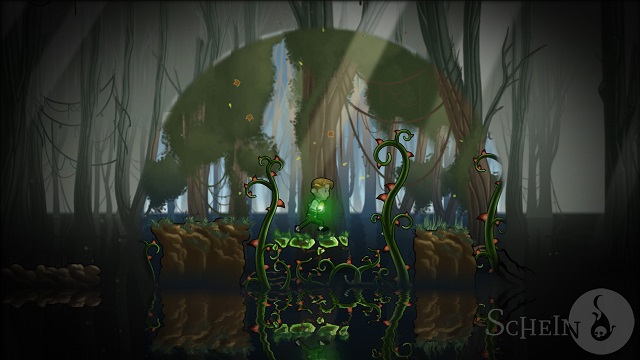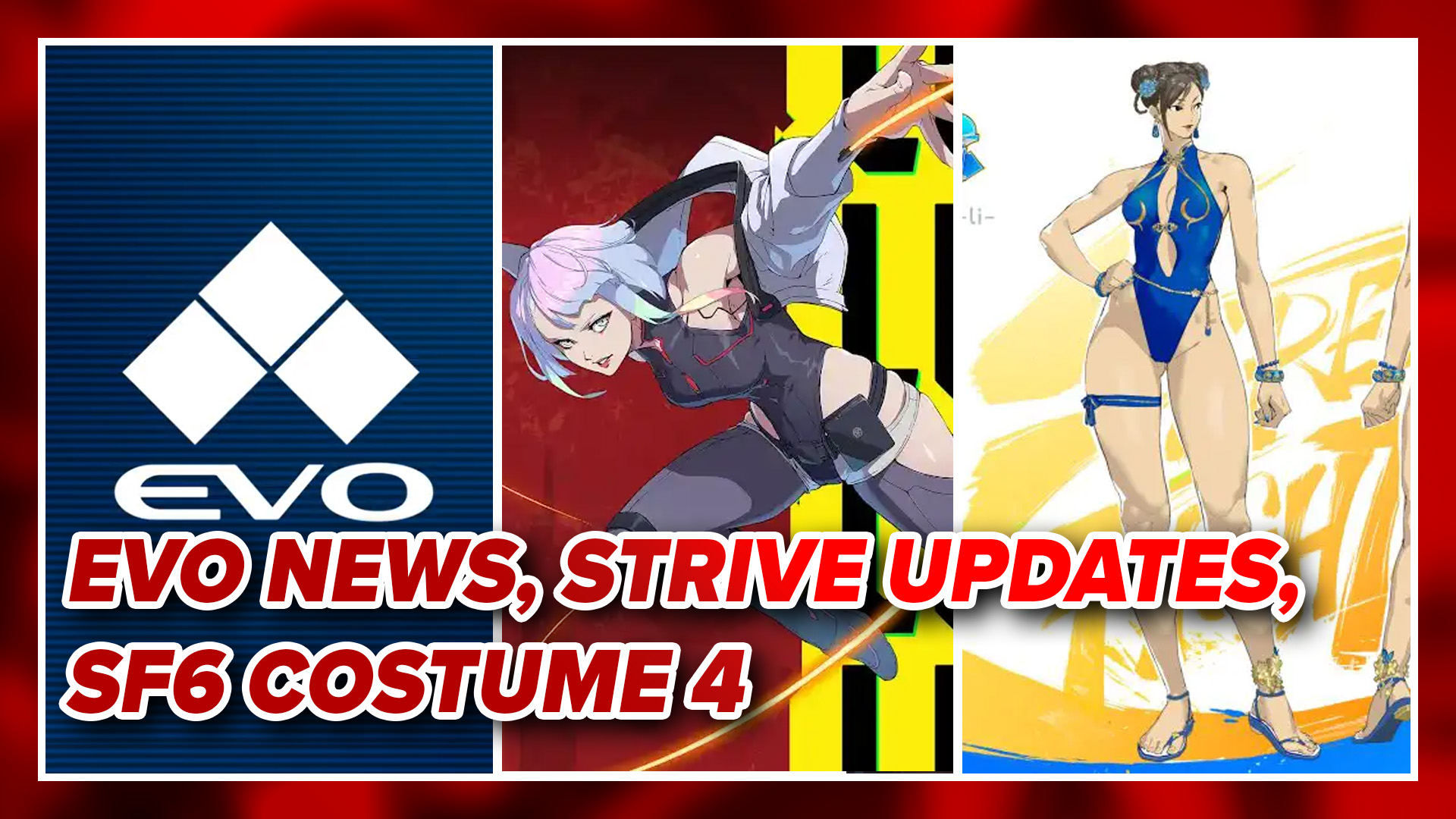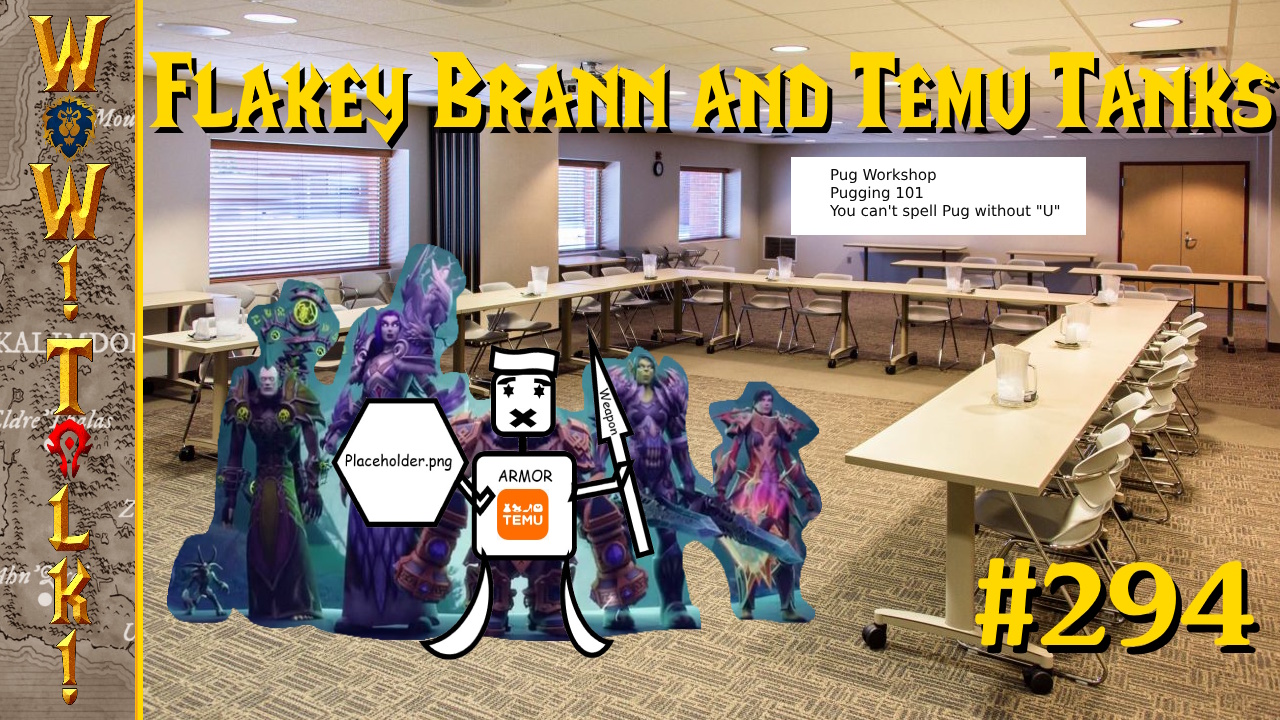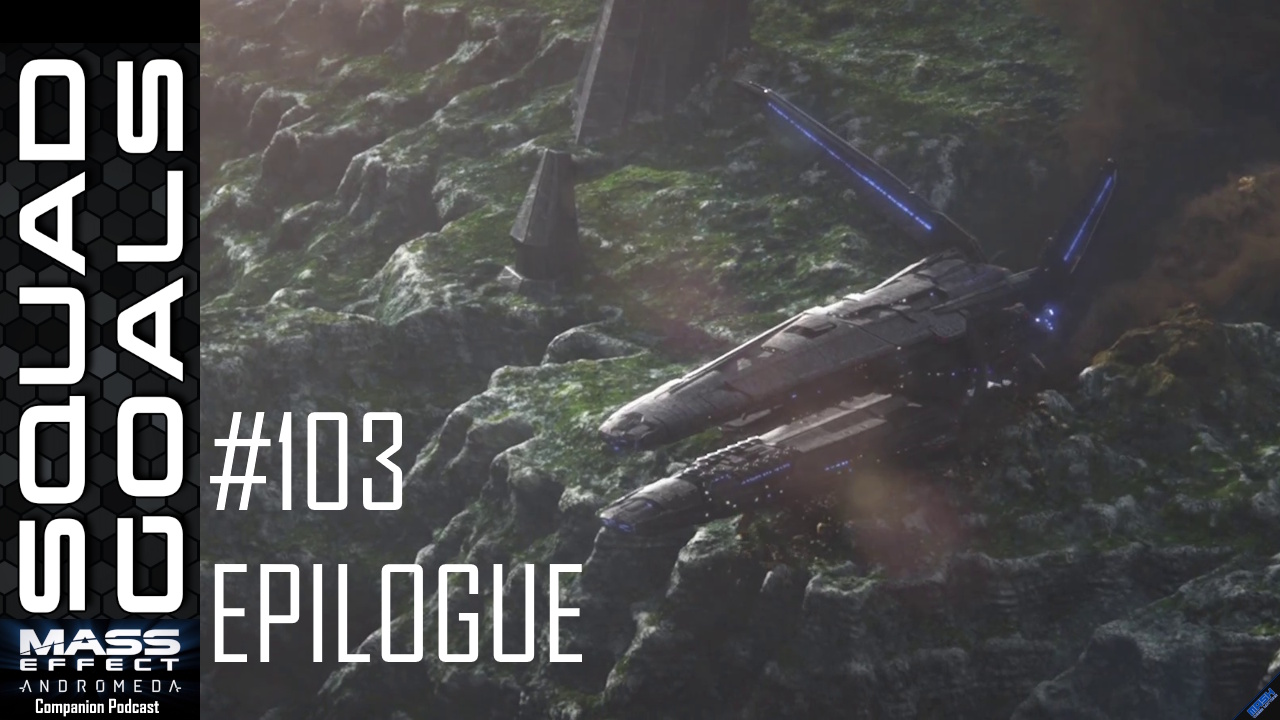I’ve been waiting with excitement for Schein ever since I first covered it way back in 2012. The game looks a whole lot different than it did back then, but the gameplay about using shifting colors to solve puzzles in a swamp is still as rock solid as ever. Zeppelin Studio have done a tremendous job making an extremely complex game using only a handful of colored lights, although it’s one players might have to sit down and think about at times. When you’re not doing that, you’ll be desperately switching in between colors, praying that you shifted the ever-changing swamp into the right position so that you don’t impale yourself. It’s challenging for the reflexes and the mind, just like a good puzzle-platformer should be.
The swamp that Schein takes place in is an odd place – one that reacts to light in important ways. The normally gray swamp might seem pretty empty at first but platforms, machinery, and other wildlife will all show up once the right color light hits it. These aren’t objects that are hidden that you can only see with the right light, but they actually don’t exist without it. If you shut off your green light while you’re standing on a platform it activated, the platform will go away and you’ll drop. This mechanic is key to the entire game, and your ability to use it will be tested over and over again.
So, if you need the light on to create the platforms you want to go to, why not just leave it on? Well, the lights don’t always make something useful appear. Often, those same colors will make spiked plants or dangerous machinery show up, and one touch of those things will send you back to the most recent checkpoint (and they can be pretty far apart). So, sometimes you’ll have to jump to a platform that only exists with the light on, but to do so you’ll have to jump through a spiked plant that also only exists at that time. It’s hard because you have to snap the light off before you hit the spikes, but then back on again in time to land on the platform. There is not a lot of margin for error right from the beginning, providing some tricky puzzles.
Got that down? After that come the mechanisms that are affected by light. These will make platforms move for you as well as raise blocks that bar your path. These only run while your light is on them as well, so you need to stay in some places to charge them enough to fully move a platform. As soon as that light is off it, the mechanism will start going back to its original position and whatever path you’ve made for yourself will close up. So, you need to get good with your timing with these, especially when they mix up with the spiked plants from the last item we learned. Within two levels, I had to ride a platform that only moved when it was lit up, jumping off of it to clear some spiked plants by turning the light off and on, and all while hoping the moving platform hadn’t lost the momentum I built up before I jumped off. It’s not easy, and while I was already twisting my controller after repeated failures, Zeppelin Studio was only getting warmed up.
The game further adds extra lanterns that the player can pick up. These will let you deposit a light anywhere you like, which is the only way to activate more than one mechanism at once. Opposite of those are the butterflies that flit around the environment. They give off their own light, and are often sitting somewhere that you might not want them to or are moving through a deadly area, constantly creating traps for you to stumble into.
Good yet? Well, there are three colors of light that all affect the game world: green, blue, and red, and each only create their own platforms and objects. You need to use the right color light in the right situation if you want to get through. Even more important is knowing how those colors affect each other and cancel each other out, as mixing them can be the only way through a given spot, too. After a time, you’re expected to be able to switch between the colors quickly, using them to properly cancel each other out, create platforms, navigate mechanical areas, and dodge traps. It’s a lot to do, and both your brain and fingers will hurt by the time you’re done a puzzle.
With so much to do, the puzzles in the game can appear rather complex. Given that there are a lot of areas where speed and platforming skill are important, it can be hard to tell when you just need to stop for a minute and use your head. I ended up in a few puzzles that seemed like they wanted me to move quickly, but I actually needed to look at the tools I had on hand and see what I could do with them. Most of the time this should be obvious, as the devs tend to have you in hallways requiring constant forward motion when they want you to move fast, but then leave you in one place when they want you to think. That’s not to say they never change that up, but for the most part their intent for the player is made very clear. It was usually my own fault for getting preoccupied with something I thought was the solution, getting so caught up in it that I wouldn’t notice the far simpler solution staring me in the face,
While those thinking sections were challenging, often requiring that I walk away from the game to really mull over the puzzle for a bit, the platforming itself was quite hard, too. I’ve run through corridors where I had to land on platforms that were only lit by the green light, but they were all equipped with mechanisms that would lower them onto spikes under that same glow. So, I had to turn on the light as I landed on them, then jump while shutting off the light so that they would stop dropping, and then flick the light back on before I fell to the spikes again. It requires some fast hands and a brain that’s equally quick at interpreting what’s happening to you.
One issue I had with all of the dodging and jumping was that the game was a little loose with the player’s hit box. I have been killed by spikes that I absolutely did not touch often enough that I’m amazed I still have an intact controller. The game does a little pause while your character screams in agony when he gets hit, so I got to see just how often he would die when he hadn’t actually made contact with anything. It was endlessly frustrating, and it forced me to be overly cautious in many areas, making the puzzles harder than they really should have been. There is not a lot of margin for error during this game, and having dicey hit detection took something that was challenging and made it unfair.
As much as I love all of the ideas they put into this game to make for some challenging puzzles, the dodgy hit detection sabotages them all. It made me play the game much more carefully than I should have, taking fewer risks and, in turn, forcing myself to endure new ones. If I’m in a hallway with spikes on the roof and had to jump to a moving platform, I had to make shallower jumps just to stay safe. The problem is that those jumps often meant that I didn’t jump quite high enough to land on the platform, so all of a sudden everything is needlessly harder than it should be.
I had to be absolutely sure I would completely clear something I was jumping over, but sometimes the landing spots weren’t very big or they’d put me right in line for a new hazard. It made something that should have been tight and challenging into a game that seemed to be going out of its way to frustrate me – asking me for precision when it made precision itself unclear. Would I be able to land on that platform or would I die? I’d only find out by leaping and hoping, often finding myself shooting a good ways back to the last checkpoint. One hit kills you, after all.
At least the swamp looks nice while I’m constantly drowning and impaling myself, though. It’s quite dismal and depressing when you start the game, but changes whenever you shine a different colored light on it. Green light shifts the world to a livelier version of itself, with lush trees and vines growing on every surface. It also makes your character look younger and happier than his regular self, literally showering things with life. Red light turns everything into some sort of burning hellscape, with your character taking on a more demonic look. The blue light shifts everything to an icy cold, and all with the flick of a button. They all look quite nice on their own, but the fact that you can change how the world works any time you like is even better. I love that there are all these worlds just hidden in the background, waiting for me to reveal them if I felt like it.
The music did its best to help me calm down when I was about to rage out from an unfair hit. It’s quite peaceful most of the time, playing subtly over the action. There is also a menace about it, something that makes it clear that bad things live in this place. The strange look combined with this music had me distrusting everything I saw and the light I carried with me. Something about the sounds just wouldn’t let me settle down, and I was always waiting for something horrible to jump out of the darkness or for the game to screw me in some way.
The voice work was nowhere near the same level as the music. The main character’s voice is quite flat, and you can tell that he’s just reading words from a card. English is not the native language of the game’s developers, though, so I think they should be forgiven for it. It’s still hard to listen to for how frequently the main character talks at points, though, and the voice of the light wisp named Irrlicht, was only a little better. The two sound quite dull together, and I was perfectly happy to ignore them both while I played.
I like Schein‘s puzzles and the dark atmosphere I experienced them in. Playing around with the lights allowed for so many different types of puzzles, and the developers seemed to have an endless supply of ways to challenge me. The music was charming and the artwork had a ton of variety that I could see any time I wanted. If only the hit detection hadn’t driven me crazy, then I would have enjoyed the game so much more. It’s still a good puzzle game that will have you scratching your head and rushing through traps, but it’s one that’ll have you tossing your controller in frustration from unfair deaths, too.
Schein is available for $8.99 from the developer’s site.


![Schein [Review]](http://cdn.mashthosebuttons.com/wp-content/uploads/2014/07/sch3.jpg)
![Schein [Review]](http://cdn.mashthosebuttons.com/wp-content/uploads/2014/07/sch4.jpg)
![Schein [Review]](http://cdn.mashthosebuttons.com/wp-content/uploads/2014/07/sch2.jpg)
![Schein [Review]](http://cdn.mashthosebuttons.com/wp-content/uploads/2014/07/steamworkshop_webupload_previewfile_138809098_preview.png.jpg)



